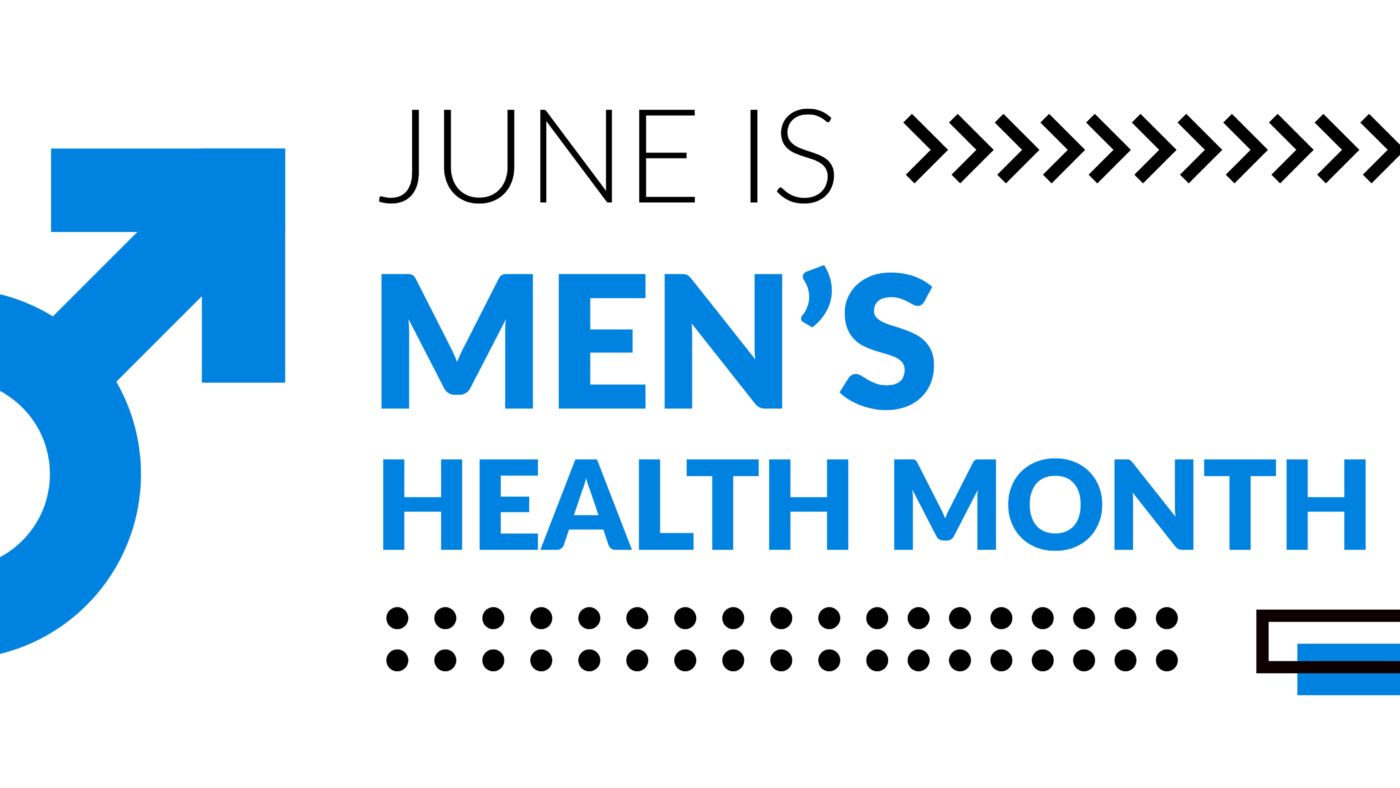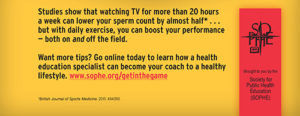
June is Men’s Health Month
According to the Centers for Disease Control and Prevention, men in the United States, on average, die five years earlier than women and die at higher rates from the three leading causes of death
During Men’s Health Month, we encourage men to take control of their health, and for families to teach boys and young men healthy habits to last a lifetime.
Don’t just watch. Get in the game.

Eating a healthy diet and getting exercise are two of the most important actions for healthy living.
Physical activity can improve health. People who are physically active tend to live longer and have a lower risk for heart disease, stroke, type 2 diabetes, depression, and some cancers.
All adults should be active for at least 2½ hours a week. There are a lot of ways to get the physical activity you need. A health education specialist can help develop and implement strategies to improve health.
Go for the first down – Make walking a part of your daily routine
Walking is a great way to get the physical activity needed to obtain health benefits. Walking does not require any special skills. It also does not require a gym membership or expensive equipment.

10 ways to make walking a habit
- Increase your daily steps to 10,000. You can walk 1,000 steps in around 10 minutes. Most of us walk between 3,000 and 4,000 steps a day anyway, so reaching 10,000 isn’t as daunting as it might sound
- Park away from entrances to the store, mall, library, shops, etc.
- Walk part of your way to work
- Take the stairs instead of the elevator
- Leave the car behind for short trips
- Walk for a meeting rather than sitting in an office
- Walk during your lunch or work breaks
- Walk after dinner with family or friends
- Join a walking group
- Use a pedometer to keep track of your walking.
Benefits of Walking
 Reduces cardiovascular disease. Getting at least 2 hours and 30 minutes of moderate-intensity aerobic activity can lower risk for these diseases.
Reduces cardiovascular disease. Getting at least 2 hours and 30 minutes of moderate-intensity aerobic activity can lower risk for these diseases.- Reduced risk of Type 2 Diabetes and Metabolic Syndrome. Research shows that lower rates of these conditions are seen with 2 hours and 30 minutes a week of at least moderate-intensity aerobic activity. The more physical activity you do, the lower your risk will be.
- Reduced risk of some cancers. Research shows that physically active people have a lower risk of colon cancer than do people who are not active.
- Reduced risk of endometrial and lung cancer. Although the research is not yet final, some findings suggest that a risk of endometrial cancer and lung cancer may be lower if people get regular physical activity compared to people who are not active.
- Walking improves quality of life. Research shows that regular physical activity improves physical fitness.
- Regular physical activity helps improve overall health and fitness, and reduces the risk for many chronic diseases.
If exercise is new — start slow.
Cardiac events, such as a heart attack, are rare during physical activity. But the risk does go up when people suddenly become much more active than usual.
Men are at risk if they do not usually get much physical activity and then all of a sudden do vigorous-intensity aerobic activity, like shoveling snow. That’s why it’s important to start slowly and gradually increase the level of activity.
Both physical activity and healthy eating play a critical role in health.

One last tip – while watching sporting events, why not enjoy some healthy competition? You and your buddies can add physical activity to your party by doing push-ups. If your team gets a first down, then your buddies rooting for the other team have to do 10 push-ups – and vice-versa.
Commercial exercises:
- pushups
- crunches
- plank
- dips
- lunges
- stretches
Now back to the game.
Related Resources
CDC Division of Nutrition, Physical Activity and Obesity’s data, trends and mapsOnline tool allows you to search for and view indicators related to nutrition, physical activity and obesity. You can search on the basis of a specific location or an indicator.
Quick Links
- SOPHE's journal self[studies
- Associations Between Social Support and Social Media Use Among Young Adult Cisgender MSM and Transgender Women Living With HIV
- Supporting Health Among Young Men Who Have Sex With Men and Transgender Women With HIV: Lessons Learned From Implementing the weCare Intervention
- Increasing Awareness of a Provincial Mental Health Resource for Boys and Young Men 12 to 17 Years: Reflections From Foundry’s Province-Wide Campaign